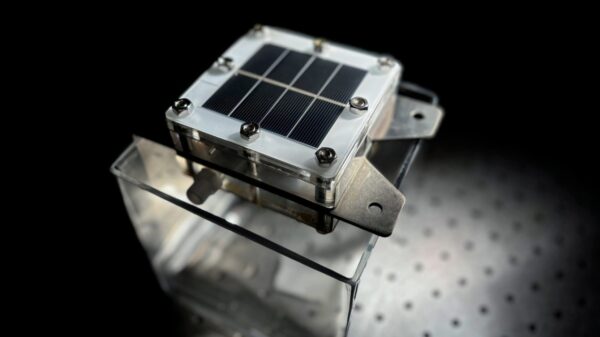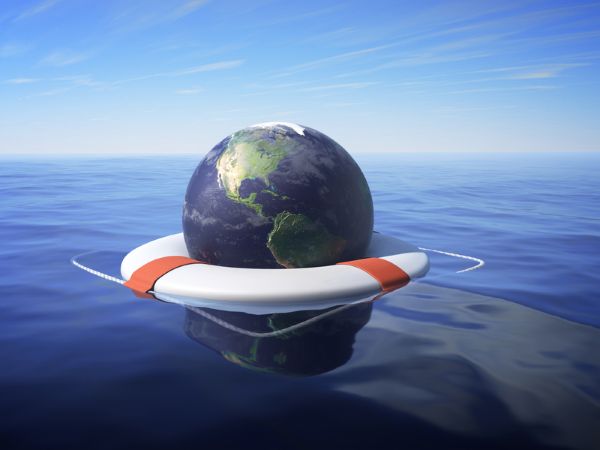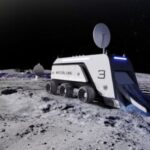Monitoring the health of the world’s oceans is a human priority. Three recent stories describe human efforts related to the ocean that can help with the environmental challenges we face in the 21st century. These include:
- The invention of a device that harvests freshwater and hydrogen from the ocean.
- A robot that can monitor the health of ocean kelp farms.
- New technology to decarbonize marine shipping.
Cornell Splits Ocean Water Into Hydrogen and Freshwater

Researchers at Cornell University have developed a water-splitting technology that combines solar energy with desalination. The technology is called a hybrid solar distillation-water electrolysis (HSD-WE) device. It uses a photoelectrochemical cell (PEC) to capture sunlight, splitting the water molecules into hydrogen and oxygen. Unlike electrolyzers that require the water to generate green hydrogen to be deionized and pure, the HSD-WE uses seawater. The result is a double bonanza: hydrogen fuel to replace fossil fuels, and potable water that doesn’t require expensive desalination plants. Where can the technology make the biggest impact? Think of island nations and coastal communities.
In the April 9, 2025, edition of the Cornell Chronicle, Professor Lenan Zhang, from the Sibley School of Mechanical and Aerospace Engineering, describes the rationale for creating the HSD-WE.
“Water and energy are both critically needed for our everyday life, but typically, if you want to produce more energy, you have to consume more water. On the other hand, we need drinking water, because two-thirds of the global population are facing water scarcity. So there is a bottleneck in green hydrogen production, and that is reflected in the cost.”
Zhang continues, “That’s why we came up with this technology. We thought, OK, what is the most abundant resource on the Earth? Solar and seawater are basically infinite resources and also free resources.”
Zhang and his colleagues estimate that within 15 years, the technology could reduce the cost of green hydrogen production to $1 per kilogram. Zhang also sees the potential for the technology to be used in solar farms, where the water could cool solar panels, improve conversion efficiency and prolong their lifespan.
A European-Built Robot Is Monitoring Kelp Farms

The University of Graz and Carbon Kapture, a UK startup, have partnered on the BioDiMoBot project to monitor kelp farms to help restore aquatic ecosystems. BioDiMoBot is a mobile robot packed with sensors, onboard artificial intelligence (AI) and biohybrid technology.
Kelp is a type of seaweed and one of the fastest-growing plants on the planet. As it grows, it stores carbon captured from the atmosphere, making it an effective sink for mitigating the principal cause of climate change. Professor Ronald Thenius, at the University of Graz, credits Carbon Kapture as providing critical insights “into kelp farming, carbon sequestration and aquaculture, areas where we as developers of sensory systems really benefit from their expertise.”
Thenius describes the project goals:
“Our aim is to produce so-called biohybrid robots that record the animals’ behavioural data in addition to classic water quality parameters such as temperature, turbidity and pH value.”
Kelp farming is a natural way to draw down atmospheric carbon. It is also an environment where ocean biodiversity can regenerate and flourish.
The BioDiMoBot features:
-
Autonomous operations capable of providing long-term monitoring of kelp farm environments.
-
Advanced electronic and biological sensors (mussels) to monitor behaviour changes to determine ecosystem health.
-
Onboard AI to do real-time data analysis and provide early detection of pollution, ocean warming and habitat degradation.
BioDiMoBot is a technology that marine biologists can use to help restore balance in aquatic environments to combat climate change.
Marine Carbon Capture Invention Named In The Top 10 For The Young Investors Prize

Alisha Fredriksson and Roujia Wen have been named among the top 10 innovators for this year’s Young Inventors Prize. They are the co-founders of Seabound, a United Kingdom-based company with a mission to decarbonize the shipping industry. It installs its carbon capture technology using a shipping container filled with lime (calcium oxide) pebbles. When connected to the exhaust system, the carbon dioxide (CO2) reacts with the lime and becomes limestone (calcium carbonate). The containers can then be offloaded where the CO2 can be extracted and stored, allowing the containers to be reused.
This technology is far different from any other marine decarbonization technology. Most decarbonization efforts require ship engine and system retrofits that allow them to burn greener fuels. If refitting is impossible, the alternative is for shippers to build brand new ships that use liquid natural gas, green hydrogen, or a combination of different fuels, solar, and sail.
According to the Organization for Economic Co-operation and Development, marine shipping produces over 800 million tons of CO2 annually. The European Commission states that EU maritime transport alone exceeded 124 million tons in 2021, accounting for 3 to 4% of the 27-country bloc’s total.
Turning captured CO2 into solid limestone rather than storing it as a liquid or gas makes handling much simpler than onboard storage using compression or liquefaction. That’s why Seabound’s founders were named as Tomorrow Shapers in the Young Inventors Prize 2025 competition, selected out of more than 450 candidates.
The technology can be scaled to match a ship’s projected emissions and operates using the exhaust heat produced by ship engines to sustain its CO2 conversion process. When a ship arrives in port, the Seabound containers can be offloaded like ordinary cargo and then can be reprocessed.
An additional bonus, Seabound’s technology also removes sulphur emissions, addressing another pollutant that is currently handled by onboard scrubbers. Today, of the more than 109,000 commercial ships of at least 100 gross tons or larger in operation, a mere 5,800 have been equipped with scrubbers that remove sulphur dioxide. Wet, open-loop scrubbers use seawater sprayed into the exhaust streams to create sulphates, which get dumped back into the ocean. Sulphates are generally pH-neutral, but in combination with hydrogen, they become acidic and contribute to ocean acidification.









